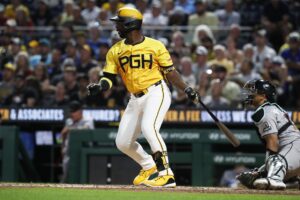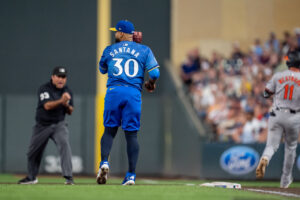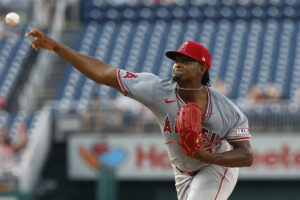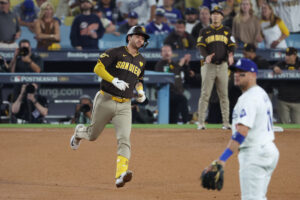Greg Bird is a vital asset for the New York Yankees who will again roster a plethora of stars in 2019. Despite the array of star power, it is Bird’s performance that may dictate the Yankees’ level of success.
Bird Struggles
Bird burst onto the scene in 2015, with 11 home runs, nine doubles, and 31 RBIs in 46 games. In that time, he slashed .261/.343/.529. Several injuries to his shoulder, ankle, and foot have left Bird a shell of the player scouts imagined him evolving into.
The 2017 postseason saw flashes of that player as Bird came up with numerous clutch hits, including a solo home run that won game 3 of the ALDS 1-0.
He has only played 130 games over the last two seasons, and in that time he slashed .196/.287/.399 with only 20 home runs, 23 doubles, and 66 RBIs. As a result, the Yankees acquired Luke Voit at the trade deadline last season.
Voit won the first base job from Bird, outplaying him to the tune of a .333/.405/.689 slash line, 14 home runs, five doubles, and 33 RBIs in 39 games down the stretch.
Despite Bird’s struggles, the Yankees have not given up on him as evident that they have not released him, and Voit has not officially been handed the starting first base job for 2019. It is safe to assume that the team still has faith in him to be the player he was in 2015 or in the 2017 postseason.
One Sided Lineup
Current known starters Aaron Judge, Giancarlo Stanton, Gary Sanchez, Gleyber Torres, and Miguel Andujar all have two things in common; they are superb offensive players and they are right handed. That’s not including newly signed righties DJ LeMahieu and Troy Tulowitzki who, as of the start of Spring Training, are expected to get significant playing time.
Players such as these make for a great starting lineup, but without a balance of left and right handers, it makes it easier for opposing managers to outmatch the lineup once the bullpen gets involved.
Last season, the Yankees didn’t have a significant disparity between lefty and righty pitchers. They hit .248/.331/.470 with a 2.2 strikeout to walk ratio and 18.2 at bats per home run. Against righties, they performed to a .250/.329/.445 with 2.3 strikeout to walk ratio and 21.8 at bats per home run.
These numbers came with Didi Gregorius, a lefty batter, in the middle of the lineup. He will be absent for most of the season following Tommy John surgery. Without Gregorius, the only left handed batters the Yankees can offer are Brett Gardner, when playing, and switch hitter Aaron Hicks. These two players project to either be top of the lineup (leadoff) or bottom of the lineup (six-nine) hitters.
This illustrates the value that Greg Bird will bring to the team this year if he can play to his abilities as he will balance out the lineup. This is value that Voit cannot provide as solely a right handed hitter.
What Bird Needs To Do
Greg Bird does not need to be the big slugger. Plenty of those can already be found in current lineup. Bird just needs to establish himself as a respectable left handed threat.
Through 423 games in Minor League Baseball and Fall League play, Bird hit 61 home runs. That roughly comes out to one home run every seven games, an impressive feat. That amounts to once every 25 at bats, or 24 home runs over the 600 at bats. His slash line during this time was .281/.396/.485
In six seasons at first base in Pinstripes, Tino Martinez posted similar numbers. He averaged 29 home runs a year, one every 20 at bats. He slashed .279/.348/.488 during that time. Tino was only an All Star once and received MVP votes only twice. Tino’s value in the eyes of the league was not recognized, but those who watched him play know he was a valuable asset and crucial cornerstone to four World Series championships.
That is what Greg Bird needs to become; a respected left handed bat that provides tremendous value to his team. If this comes to fruition, Bird can dictate how far the Yankees go in 2019.
Main Photo:






